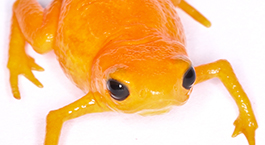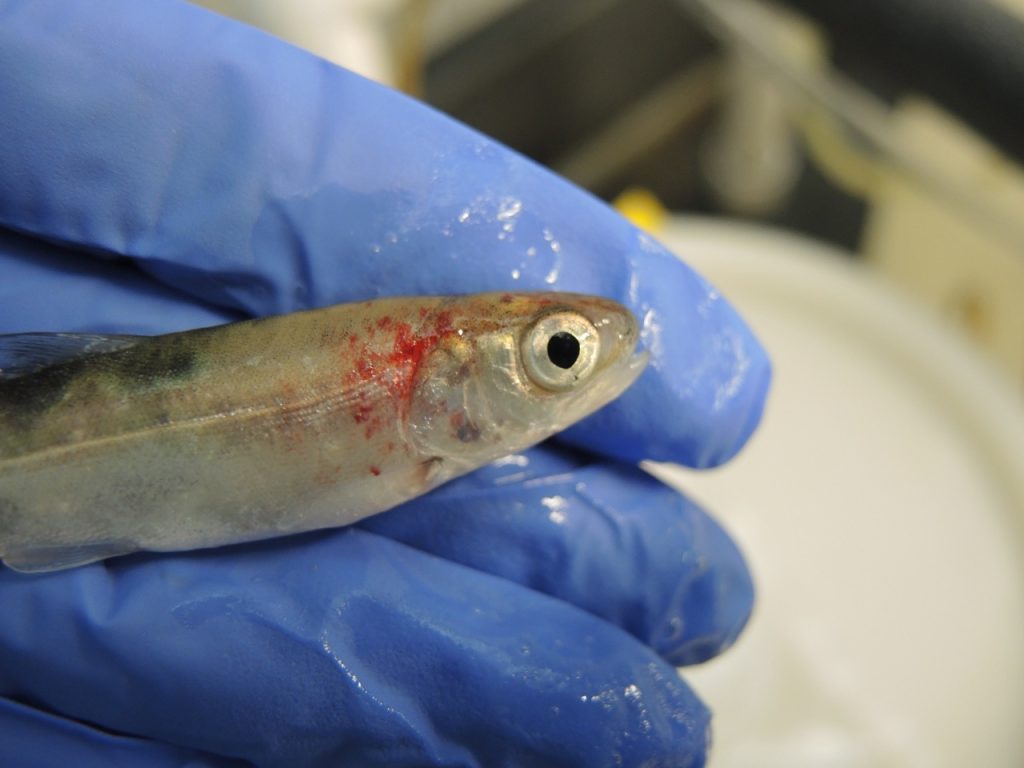Read local and national news that features faculty, students, and alumni from the College of Arts & Sciences. Most recently, the College is trending in the news for the American Ballet Theatre Summer Intensive, research on sleep behavior, the upcoming runoff election, and more.
Tag: Department of Biological Sciences
Student Murals Highlight the Problems of Plastic

Dr. Ryan Earley, associate professor of biological sciences, and students from UA’s Marine Science Club have been using bottle caps to create murals that bring attention to the impact of pollution on biodiversity.
Read More from Student Murals Highlight the Problems of Plastic
Disease Afflicting Frogs Becoming Deadlier

From the July 2018 Desktop News | A disease-inducing fungus in amphibians worldwide could become deadlier as different genetic variations emerge, according to research led by The University of Alabama. Biologists tested the harmfulness of a Brazilian hybrid form of Batrachochytrium dendrobatidis, known simply as Bd or the amphibian chytrid fungus, as well as both parent forms, on species of frogs from the Brazilian Atlantic Forest. They found infections and strength of the illness increased with the hybrid form. Published […]
Microscopic Battle
“Not all viruses are bad,” says Dr. Asma Hatoum-Aslan, a UA microbiologist. “There are many viruses out there that specifically attack bacteria. We are particularly interested in understanding the strategies they use to kill bacteria to our own advantage and harness them as alternatives to conventional antibiotics.”
A&S in the News: July 1-7, 2018
Read local and national news that features faculty, students, and alumni from the College of Arts & Sciences. Most recently, the College is trending in the news for an exhibit inspired by the recent “Black Panther” film, research on black holes, the Alabama Blues Project, and more.
A&S in the News: June 24-30, 2018
Read local and national news that features faculty, students, and alumni from the College of Arts & Sciences. Most recently, the College is trending in the news for an exhibit at the Gorgas House Museum, research on deadly fungus, the bombings in Austin, and more.
Koushik Kassanagotu

As the conversation on healthcare continues to heat up on national and local scales, innovative minds like Koushik Kasanagottu are dedicated to entering the primary care field and changing the narrative of healthcare infrastructure and availability in the United States. Kasanagottu’s medical career is dedicated to focusing on rural areas with inadequate healthcare providers, and finding innovative solutions to instill preventative healthcare and eradicate common preventable diseases such as diabetes and hypertension. “The number one cause of death in the […]
Summer Reading List 2018
What are you reading this summer? Here are seven books by A&S faculty, plus the latest by distinguished scientist and UA alumnus Dr. Edward O. Wilson: Grease: Gender, Nostalgia and Youth Consumption in the Blockbuster Era By Barbara Brickman (New College, bjbrickman@nc.ua.edu) Grease: Gender, Nostalgia and Youth Consumption in the Blockbuster Era examines one of the highest grossing film musicals of all time and its place as a model for the modern blockbuster ushered in in the 1970s. Brickman describes, “I also […]
A&S in the News: June 3-9, 2018
Read local and national news that features faculty, students, and alumni from the College of Arts & Sciences. Most recently, the College is trending in the news for Alabama Democrats in the general election, summer reading lists, and more.
Research Models How Deadly Virus Moves Among Pacific Salmon, Trout

From the June 2018 Desktop News | For the first time researchers studying a deadly virus modeled how it spreads to young trout and salmon in the waters of the Columbia River Basin, showing that migrating adult fish are the main source of exposure. The ecological modeling of the infectious hematopoietic necrosis virus, or IHNV, shows how it moves across the landscape over time, providing a crucial understanding for managers of hatchery programs attempting to protect juvenile salmon and trout. “Knowing the […]
Read More from Research Models How Deadly Virus Moves Among Pacific Salmon, Trout